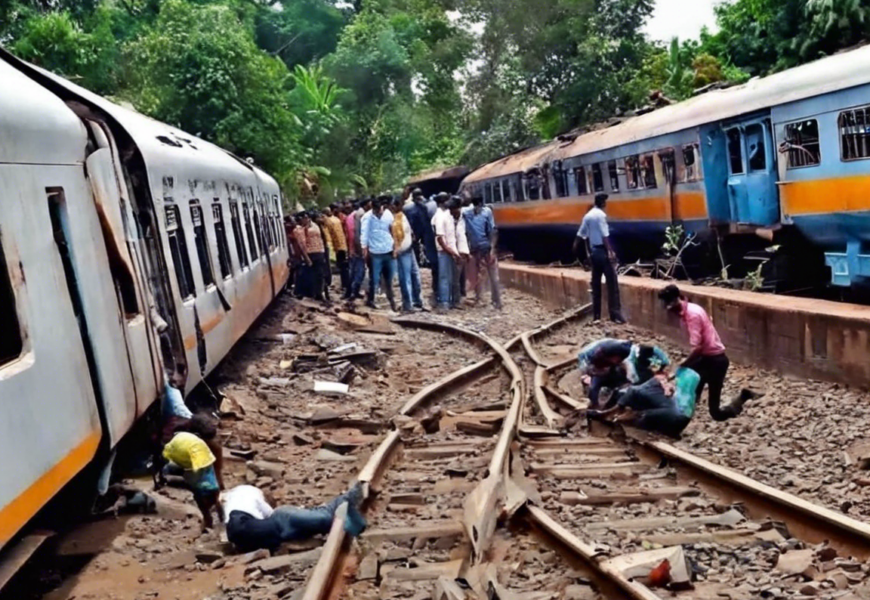On the fateful day of July 16, 2021, a tragic incident unfolded in the town of Balasore in Odisha, India, as a freight train carrying coal derailed, leading to devastating consequences. The Balasore train accident has once again underscored the critical importance of safety measures in the railway industry and the need for comprehensive investigations to prevent such disasters from reoccurring in the future. This article delves into the causes of the Balasore train accident, its impact, and the lessons that can be learned from this unfortunate incident.
Understanding the Balasore Train Accident
1. Causes of the Accident
The preliminary investigation into the Balasore train accident has pointed towards several factors that might have contributed to the derailment of the freight train. Some of the key causes include:
- Track Defects: It is suspected that the presence of track defects, such as cracks or misalignment of tracks, could have played a significant role in the derailment.
- Overloading: Cargo trains are often loaded beyond their capacity, which can exert excessive pressure on the tracks and increase the likelihood of derailment.
- Human Error: The negligence or error of railway personnel, such as improper maintenance of the train or failure to adhere to safety protocols, could also be a contributing factor.
2. Impact of the Accident
The Balasore train accident had far-reaching consequences that affected various stakeholders, including:
- Loss of Lives: The most tragic outcome of the accident was the loss of lives. Several individuals, including railway staff and bystanders, lost their lives in the derailment.
- Infrastructure Damage: The derailment not only damaged the tracks but also impacted the surrounding infrastructure, leading to disruptions in train services.
- Environmental Concerns: The spilling of coal from the freight train raised environmental concerns due to potential contamination of water sources and soil in the vicinity.
3. Lessons Learned
In the wake of the Balasore train accident, there are several key takeaways that can inform future safety measures in the railway industry:
- Regular Maintenance: Ensuring regular inspection and maintenance of tracks and trains to identify and address any potential defects.
- Safety Protocols: Strict adherence to safety protocols and guidelines to prevent human errors and mitigate risks.
- Investment in Technology: Embracing technological solutions such as automation and predictive maintenance systems to enhance safety and efficiency in railway operations.
Frequently Asked Questions (FAQs)
-
What is the role of the government in ensuring railway safety?
The government plays a crucial role in setting and enforcing safety regulations, conducting inspections, and investing in infrastructure upgrades to enhance railway safety. -
How can passengers contribute to railway safety?
Passengers can contribute to railway safety by following safety instructions, reporting any suspicious activities, and cooperating with railway staff during emergencies. -
What are the common causes of train accidents?
Train accidents can be caused by factors such as track defects, human error, inclement weather, equipment failure, and operational issues. -
How are railway accidents investigated?
Railway accidents are investigated by specialized teams that analyze data, inspect the accident site, interview witnesses, and review maintenance records to determine the causes of the accident. -
What measures can be taken to prevent train accidents?
Preventive measures to reduce train accidents include regular track inspections, staff training programs, investment in safety technology, and implementing strict safety protocols. -
What are the immediate steps taken after a train accident?
In the aftermath of a train accident, emergency services are deployed to the site, injured individuals are provided medical assistance, an investigation is launched, and steps are taken to restore train services as soon as possible. -
How can communities near railway tracks stay safe?
Communities living near railway tracks should be cautious around tracks, avoid trespassing, teach children about railway safety, and report any safety concerns to the railway authorities. -
Are there international safety standards for railways?
Yes, several international organizations, such as the International Union of Railways (UIC) and the International Railway Safety Council (IRSC), establish and promote safety standards for railways worldwide. -
What role do technology and innovation play in enhancing railway safety?
Technology and innovation play a pivotal role in enhancing railway safety by enabling predictive maintenance, real-time monitoring, automated systems, and collision avoidance mechanisms. -
How can railways improve communication during emergencies?
Railways can improve communication during emergencies by installing emergency communication systems on trains, conducting regular drills for staff, and establishing clear communication protocols with passengers.
The Balasore train accident serves as a somber reminder of the risks inherent in railway operations and the critical need for continuous vigilance and proactive safety measures to safeguard lives and infrastructure. By learning from such incidents, implementing robust safety protocols, and embracing technological advancements, the railway industry can strive towards a safer and more efficient future.




